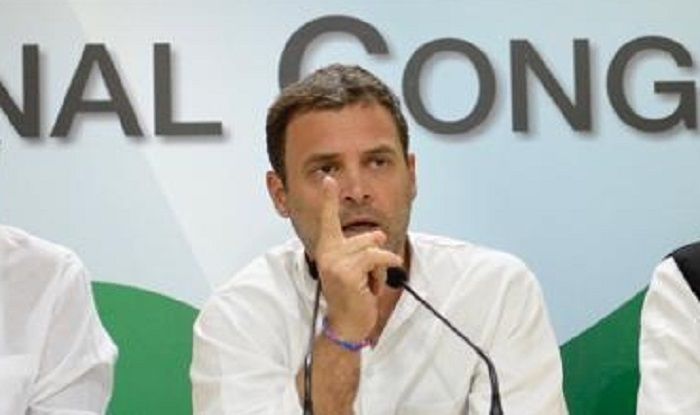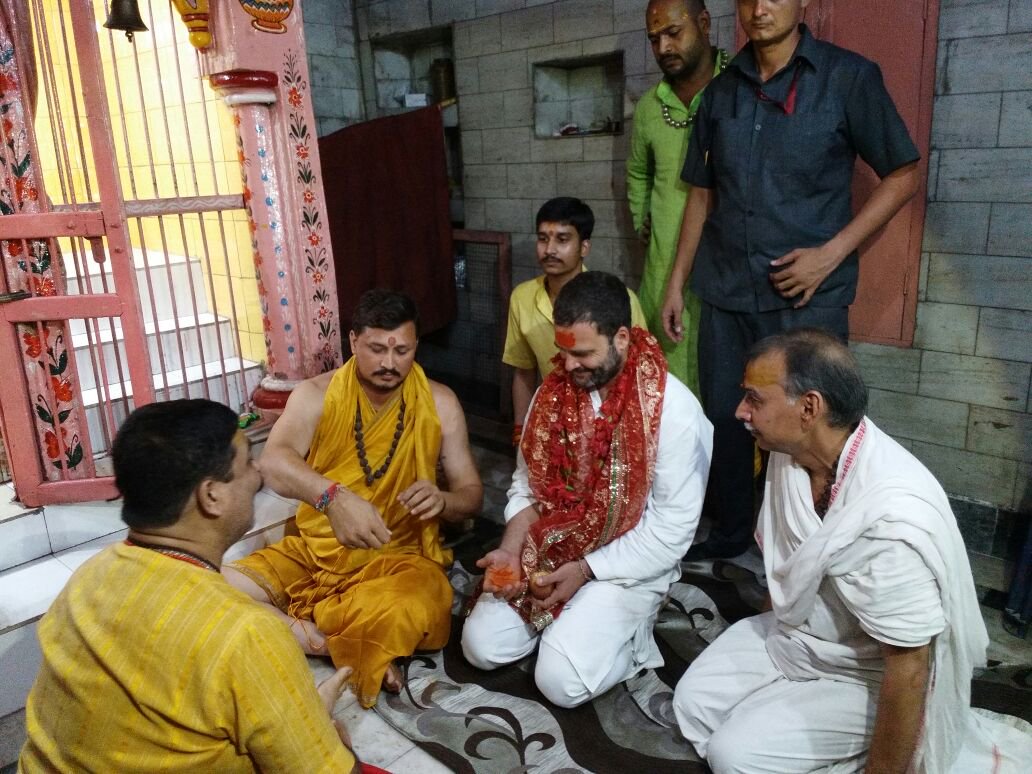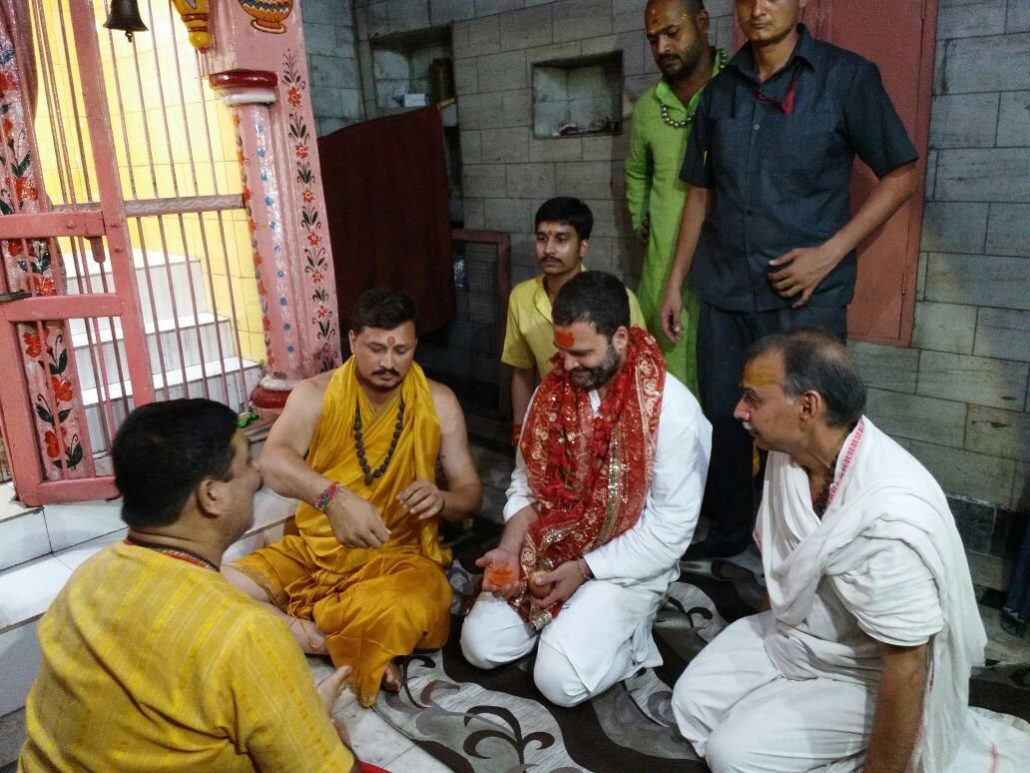
Curtsy: Sushit K Sen
The Assembly elections that are now already in progress should have been the ‘moment’ of opportunity that the bedraggled Congress was waiting for after being mauled in the 2014 Lok Sabha elections and a raft of state elections thereafter.
Instead of seizing the day, the Congress finds itself instead in a beleaguered state, principally because of a lack of coherent strategy, leading to a state of drift, and its delusions of grandeur, in turn caused mainly by its inability to come to terms with the screamingly plain truth that it is no more the sole arbiter of India’s destiny.
The lack of a coherent strategy has been caused by and reflects a lack of organisational cohesion. Thus, for instance, the failure of the ‘high command’ to stamp election campaigns with its own imprint and ensure a coordinated approach in the three north Indian states going to the polls — Chhattisgarh, Madhya Pradesh and Rajasthan — may end up costing it dearly.
Let us take the states one by one. An alliance with the Bahujan Samaj Party (BSP) in Chhattisgarh would have sewn up the state for the Congress, on the back of 15 years of Bharatiya Janata Party (BJP) rule under Chief Minister Raman Singh. Their combined voting percentage would have been close to 45 per cent compared to the BJP’s 41 percent, if we extrapolate the 2013 Assembly results. The chances, of course, are that this difference would have been higher given a certain anti-incumbency fatigue and the BJP’s current difficulties over the Rafale controversy and other issues, that have cast the party in a noticeably poor light.

Many traditional BJP voters are planning to either abstain or vote for other parties. Unfortunately, the Congress has failed to capitalise on this disenchantment by playing an instrumental role in creating a united front. Instead, the Congress’s brains trust, for want of a better appellation, is seeking to counter the BJP’s strident majoritarianism and authoritarianism with its own brand of Hindutva-based mobilisation, not pausing to consider whether it can compete with the BJP by legitimising its ideological positions and political programmes. The Congress’ election manifesto for Madhya Pradesh and the position its state unit has taken in Kerala, which aims at encouraging ‘devotees’ to prevent the Left Front government from implementing the Supreme Court’s Sabarimala order, are unbelievable concessions to Hindu ‘sentiment’
In following the route it has been pursuing, the Congress has isolated itself at a juncture in which other opposition parties have been actively pursuing the objective of joint action. Samajwadi Party chief Akhilesh Yadav has rejected, for instance, a late, and obviously spurious, not to say infructuous, attempt by the Congress to build an alliance comprising the Samajwadi Party, Nationalist Congress Party, Sharad Yadav’s Loktantrik Janata Dal and Ajit Singh’s Rashtriya Lok Dal in Rajasthan. This is being seen by some as being a precursor to the BSP and Samajwadi Party tying up in Uttar Pradesh and in the process shutting out the Congress. In terms of seats, this would not be catastrophic, especially if, as is likely, the combine backs Congress president Rahul Gandhi and United Progressive Alliance chairperson Sonia Gandhi’s candidature from Amethi and Rae Bareli. But in symbolic terms, such an outcome would be a big blow to the Congress and its claims to leading the alliance against the BJP.
Andhra Pradesh chief minister Chandrababu Naidu and West Bengal chief minister Mamata Banerjee are already coordinating Opposition action, with a meeting held in Kolkata on Monday. In the meanwhile, both have sounded the bugle by withdrawing a general waiver to the Central Bureau of Investigation to pursue investigations in their states. Naidu, moreover, is trying to bring Opposition parties together to approach the Supreme Court with a plea for the curtailment of the powers of other Central agencies — the Income Tax Department, the Enforcement Directorate et al — in investigating cases relating to, or ‘targeting’, Opposition parties before the next Lok Sabha elections.
Simultaneously, the Congress has to come up with ripostes to the BJP’s barrage of gibes about the ‘ownership’ of the party. Prime Minister Narendra Modi and BJP president Amit Shah have been constantly lampooning the Congress over the role played in its affairs by the Gandhi family. Modi has dared Rahul Gandhi to step down and allow someone from outside the family to become party president and, by extension, the party’s prime ministerial nominee. He has most recently pointed to the manner in which Sitaram Kesri was ousted from the party presidency in 1998 after a year-and-a-half stint to make way for Sonia Gandhi. Shah, meanwhile, has likened the Congress to a private limited company owned by the Gandhi family.
It was only after Rajiv’s death that Rao became party president and prime minister and he was followed as Congress president by Kesri, mainly because Sonia showed no desire to become a politician. After she acceded following repeated pleas, which itself is a revealing fact, she became party president followed recently by son Rahul. Thus, in the 40 years after the 1978 split, a Congress leader has led the party for just seven-odd years.
It’s a different matter that BJP leaders, too, are unaware of historical nuance, failing to distinguish between the Congress in its various phases, which leads them in semi-literate fashion to equate, for instance, Nehru with Indira Gandhi. It must also be recalled in fairness to the Congress that in the 38 years since Indira Gandhi returned to power — in 1980, a Gandhi has been prime minister for nine years, while Congress leaders from outside the Congress have held the chair for 15 years: Rao was prime minister for five of those and Manmohan Singh for 10. The BJP forgets, too, that Sonia lifted her party up by the bootstraps by renouncing prime ministerial office. It was an act of self-abnegation and sacrifice that may have been prompted by tactical motives but was nevertheless an extremely courageous and self-disregarding one.
Self-abnegation, self-sacrifice and disregard for one’s own ambitions are not descriptions one would normally apply either to Modi or Shah. Both are viscerally ambitious, authoritarian, paranoid and power-hungry beyond even the accepted standards of political life, which are not particularly high. The charges made by the duumvirate do not carry much weight because ever since the leadership of the party ceded power to Modi (who inducted Shah as his hatchet man), the BJP has ceased to be the functionally democratic party it once was (as was its forbear, the Jana Sangh), possibly the only positive thing one can say about the merchants of Hindutva.
Under the Modi-Shah dispensation, the BJP has acquired the worst traits of the Congress — for instance, the practice of nominating chief ministers from Delhi rather than allowing the relevant legislature parties to elect their own leaders.
It’s a case, to use a tired cliché, of the pot calling the kettle black. The only difference is that Modi rose from the ranks and captured the party, while Rahul did it as a matter almost of birthright. The difference, such as it is, is functionally not much of a difference.
Politically, the Congress would do better by pointing to the BJP’s penchant for trying to capture all manner of institutions and subverting them to subserve its alfresco designs of imposing a theocratic template on the Indian polity. For all its faults, opportunism of the kind that leads it into the terrain of ‘soft Hindutva’, whatever that’s supposed to mean, being one of the worst of them, the Congress cannot be accused of trying to systematically capture and subvert institutions. That’s one arena in which it has remained, generally speaking, true to its mainstream heritage. It should trumpet this achievement.




